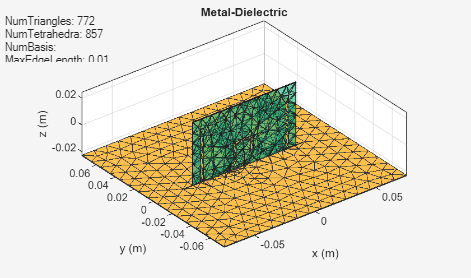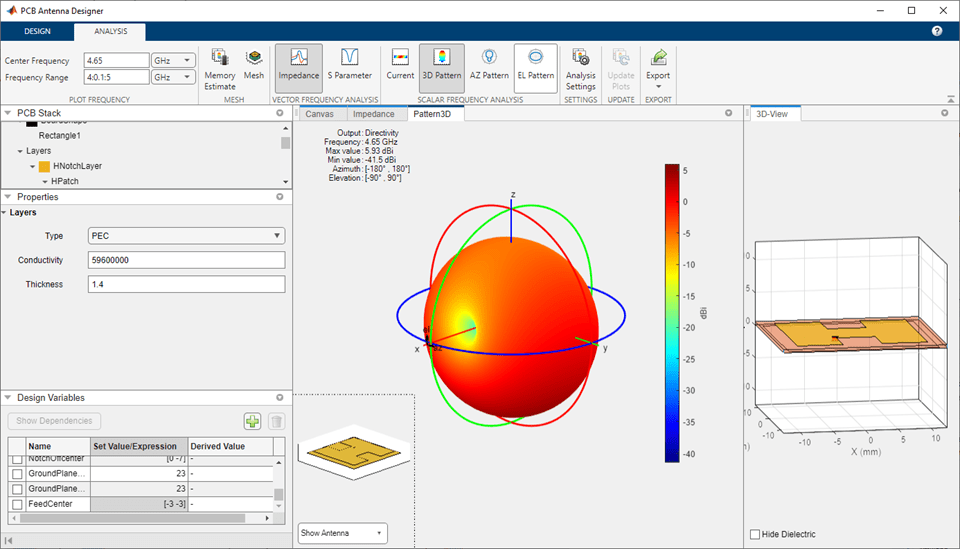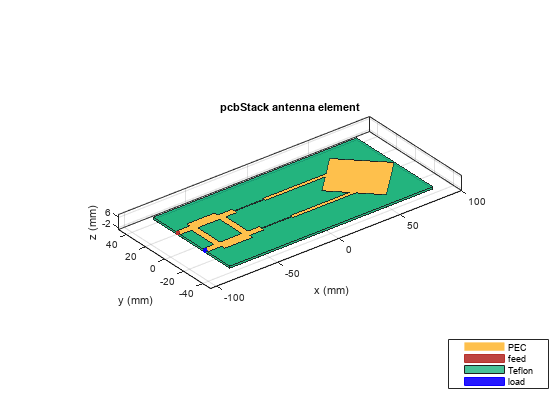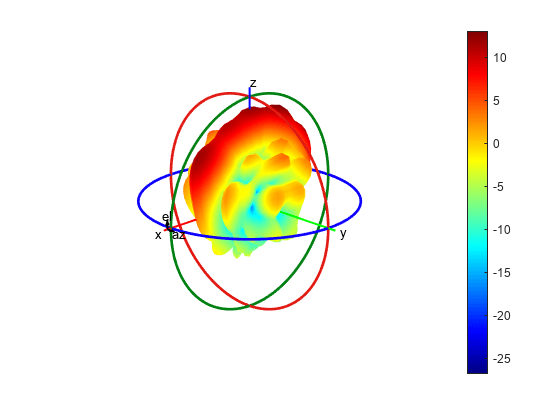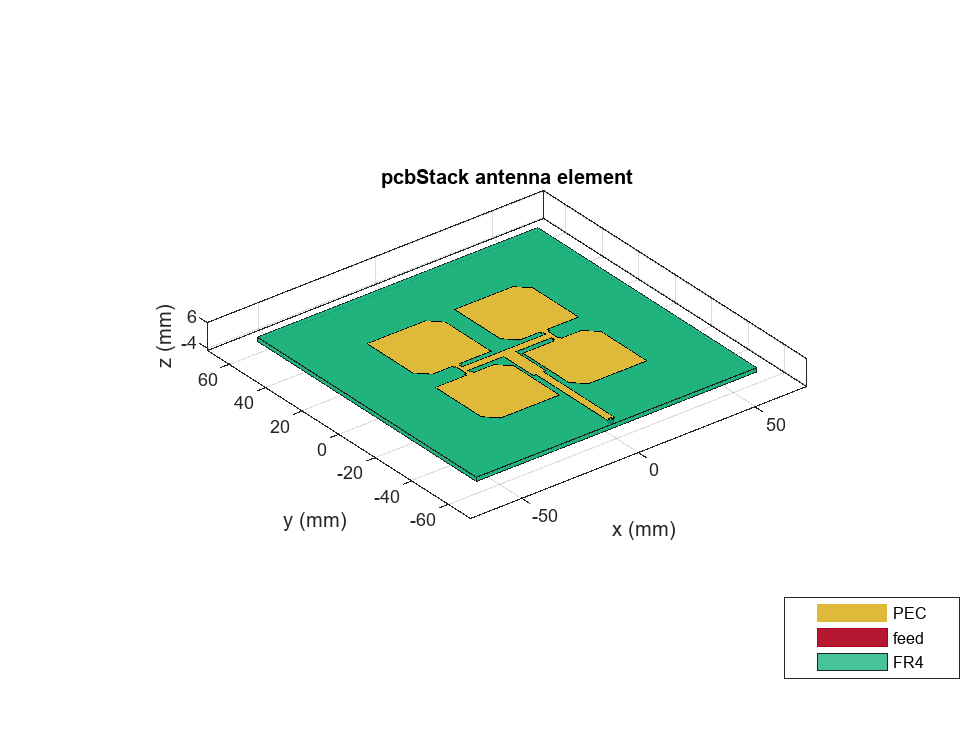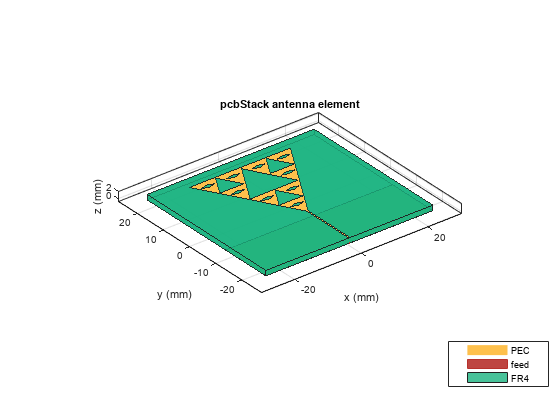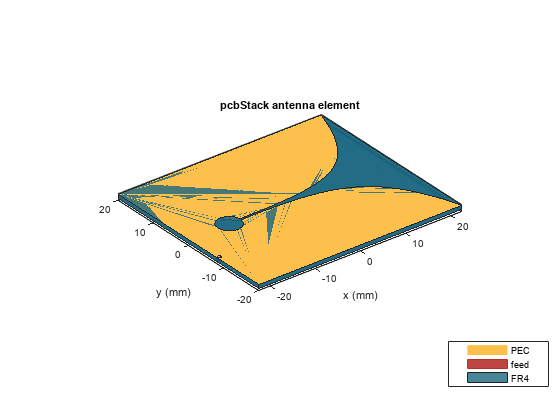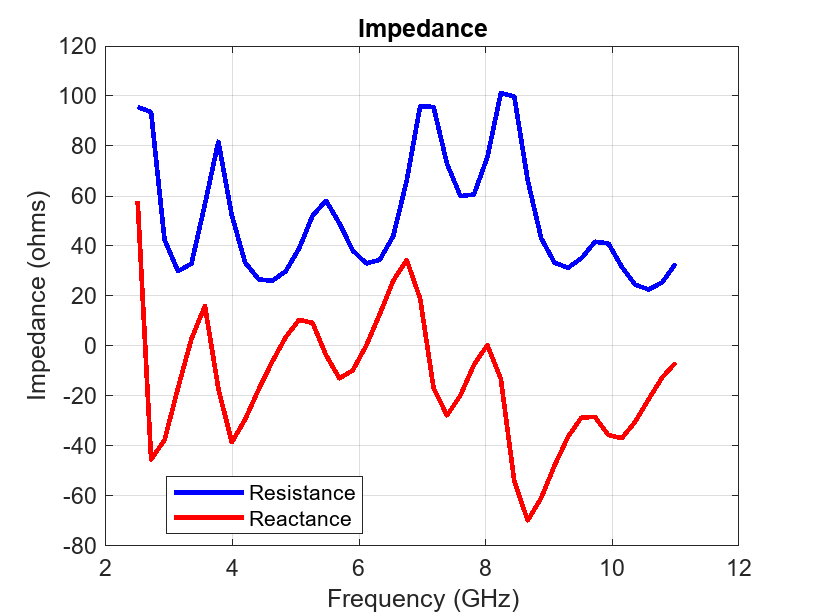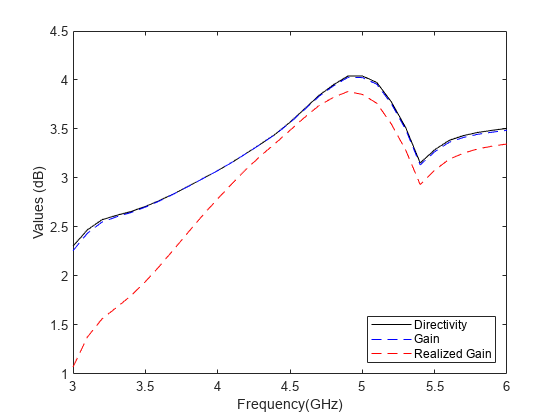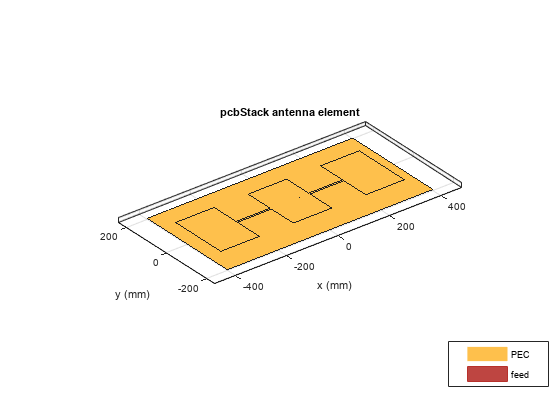PCB Antenna Design and Fabrication
Use Antenna Toolbox™ to design custom printed circuit board (PCB) antennas for practical designs such as cell phones, RFID, and IoT applications. Prototype and implement simulated PCB antennas by specifying the RF connector suitable for your application and customizing the PCB manufacturing services.
Combine geometrical shapes and mathematical operations to create
unique antenna geometries that meet for your antenna specifications. For
example, you can use the shape objects and their functions to create
single or multi-layered PCB-based antenna designs using the pcbStack object.
Use PCB fabrication objects and functions in this category to read and write (PCB) designs using Gerber files.
To interactively design, analyze, and export single or multi-feed PCB antennas, use the PCB Antenna Designer app.
Apps
| PCB Antenna Designer | Design, analyze, optimize, and export single or multifeed PCB antennas (Since R2021b) |
